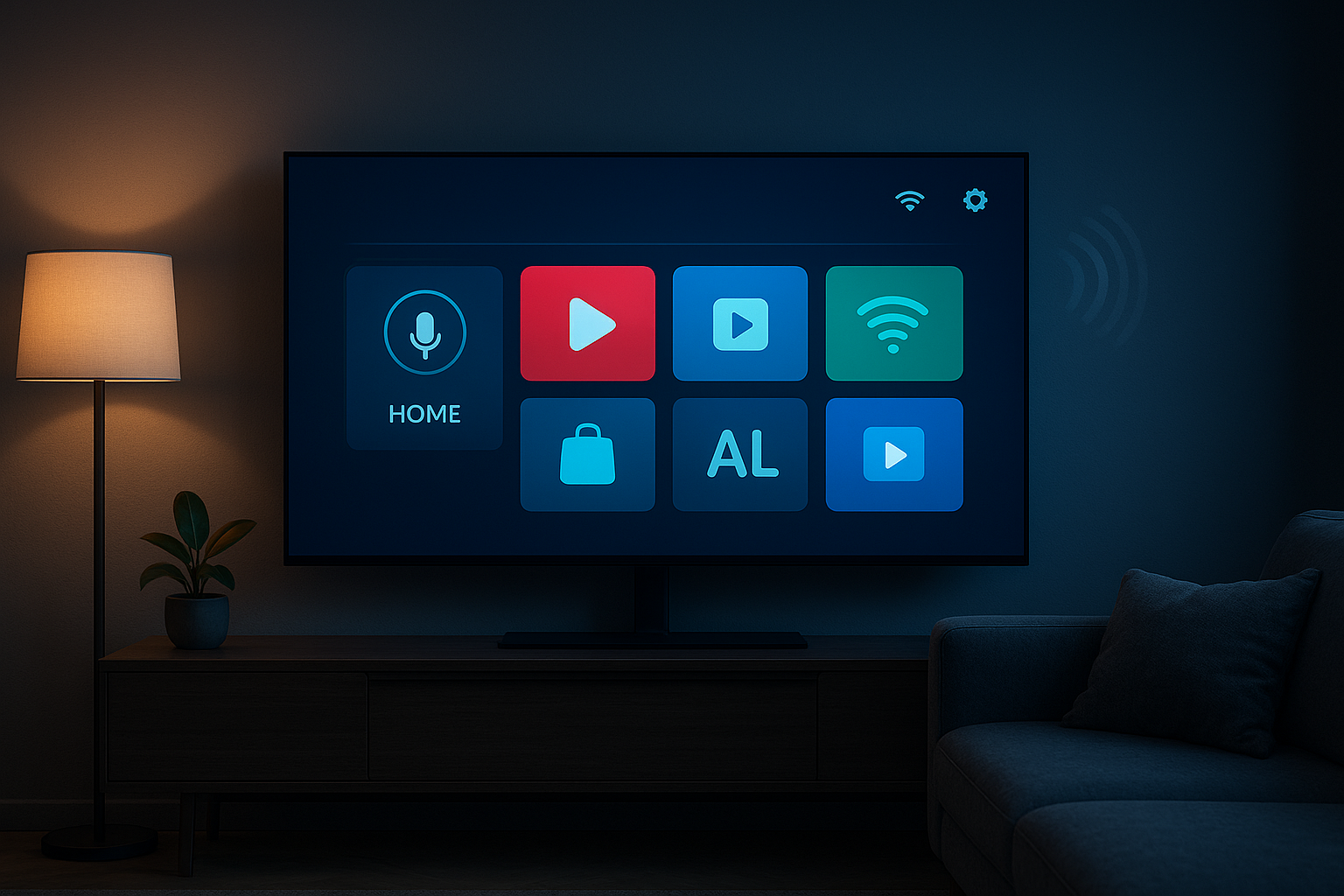Introduction
Television has come a long way from bulky boxes and antenna signals to ultra-thin screens that stream your favorite shows on demand. If you’ve been wondering what is a Smart TV, you’re not alone — it’s one of the most common questions for people upgrading their home entertainment setup.
A Smart TV is essentially a television that connects to the internet, giving you access to apps, streaming services, web browsers, and even smart home control features — all without needing external devices. In short, it merges the best of digital technology and traditional television, creating a more interactive, personalized, and connected viewing experience.
(Interlink: What Is OPS Technology? Definition, Benefits, and Real-World Uses — a similar innovation powering display systems in modern Smart TVs.)
What Is a Smart TV? (Definition)
A Smart TV is an internet-enabled television designed to provide on-demand entertainment through built-in applications. Unlike traditional TVs that rely solely on cable or satellite connections, Smart TVs allow users to stream movies, listen to music, browse the internet, and connect with other smart devices — all from a single interface.
They function much like smartphones or tablets, running on operating systems such as:
- Google TV / Android TV
- Tizen (Samsung)
- webOS (LG)
- Roku TV
- Fire TV (Amazon)
Each platform offers its own set of apps, features, and user experience, but the core idea remains the same — connectivity and convenience.
How Does a Smart TV Work?
A Smart TV connects to your home network via Wi-Fi or Ethernet cable, linking you directly to the internet. Once connected, you can:
- Stream content from platforms like Netflix, YouTube, Disney+, and Prime Video.
- Access news apps, music streaming, and web browsers.
- Sync your phone or tablet for screen mirroring or casting.
- Control smart home devices using built-in voice assistants.
Behind the scenes, Smart TVs use processors and memory just like computers, running an operating system that manages apps, connectivity, and performance. Updates are pushed regularly to improve features, fix bugs, and enhance compatibility with new streaming technologies.
Key Features of a Smart TV
Modern Smart TVs come loaded with intelligent features that make entertainment more accessible and enjoyable:
- Built-In Streaming Apps — Netflix, Hulu, Amazon Prime, Disney+, YouTube, and more.
- Voice Control — Integrated AI assistants like Alexa, Google Assistant, or Bixby.
- Screen Mirroring & Casting — Easily share content from smartphones and laptops.
- App Store Access — Download apps directly from a dedicated app marketplace.
- Web Browsing — Surf the internet, check social media, or watch online videos.
- Smart Home Integration — Control lighting, thermostats, and cameras from your TV.
- Software Updates — Keeps your TV secure and compatible with evolving tech.
(Interlink: What Is Back Light Unit Lens Technology? Understanding the Patent Everyone’s Talking About — a crucial innovation that enhances brightness and clarity in modern Smart TV displays.)
Smart TV vs Regular TV: What’s the Difference?
| Feature | Smart TV | Regular TV |
|---|---|---|
| Internet Access | ✅ Yes (Wi-Fi / Ethernet) | ❌ No |
| Streaming Apps | ✅ Built-in | ❌ Requires external devices |
| Voice Control | ✅ Available | ❌ Not supported |
| Software Updates | ✅ Regular updates | ❌ None |
| Price Range | 💰 Higher | 💰 Lower |
| Smart Home Connectivity | ✅ Yes | ❌ No |
While regular TVs can still deliver excellent visuals, Smart TVs provide a connected experience — perfect for those who stream content daily or want fewer cables and external devices.
Benefits of Owning a Smart TV
1. Stream Without Limits
Watch movies, shows, and videos anytime with platforms like Netflix, Amazon Prime, or YouTube — no need for a separate streaming box.
2. Seamless Connectivity
Mirror your phone’s screen, play smartphone videos on your TV, or even use your voice to switch channels.
3. Customizable Experience
Smart TVs learn from your habits — recommending shows or apps based on what you watch.
4. Smart Home Control
If your home is equipped with IoT devices, you can control them directly through your TV — from adjusting lights to checking your door camera feed.
5. Fewer Devices, Cleaner Setup
Since most streaming and connectivity features are built-in, you can say goodbye to messy wires and multiple remotes.
Drawbacks to Consider
While Smart TVs are revolutionary, they’re not without downsides:
- Internet Dependency: No Wi-Fi means limited functionality.
- Privacy Concerns: Some Smart TVs collect viewing data to improve recommendations.
- Limited Lifespan for Software Updates: Older models may stop receiving app updates.
- Slower Over Time: Like smartphones, Smart TVs can experience lag after years of use.
How to Choose the Right Smart TV
When shopping for a Smart TV, consider these key factors:
- Display Type: OLED offers deeper blacks, while QLED provides better brightness.
- Resolution: Go for 4K or 8K for a future-ready setup.
- Operating System: Choose one with your preferred apps and interface.
- Audio Quality: Look for Dolby Atmos or DTS support.
- Connectivity: Ensure it has enough HDMI ports, Bluetooth, and Wi-Fi support.
Are Smart TVs Worth It?
Absolutely — if you regularly stream, game, or want a connected ecosystem. They provide versatility, convenience, and a gateway to endless digital content. For those who mainly use cable or DVDs, however, a standard TV or adding a streaming stick might be enough.
The Future of Smart TVs
The Smart TV industry continues to evolve rapidly. Future models are expected to include:
- AI-powered voice and gesture control
- Hyper-personalized recommendations
- Eco-friendly display technology
- Deeper smart home integration
- Augmented and interactive viewing features
These advancements signal a shift toward an even more connected and immersive home entertainment future.
Conclusion
Understanding what is a Smart TV helps you make an informed decision before upgrading your home setup. It’s more than just a screen — it’s a connected hub that brings streaming, gaming, and smart home control together in one sleek device.
With continuous software updates and advanced display technologies, Smart TVs represent the future of how we consume entertainment — interactive, customizable, and powered by AI.









